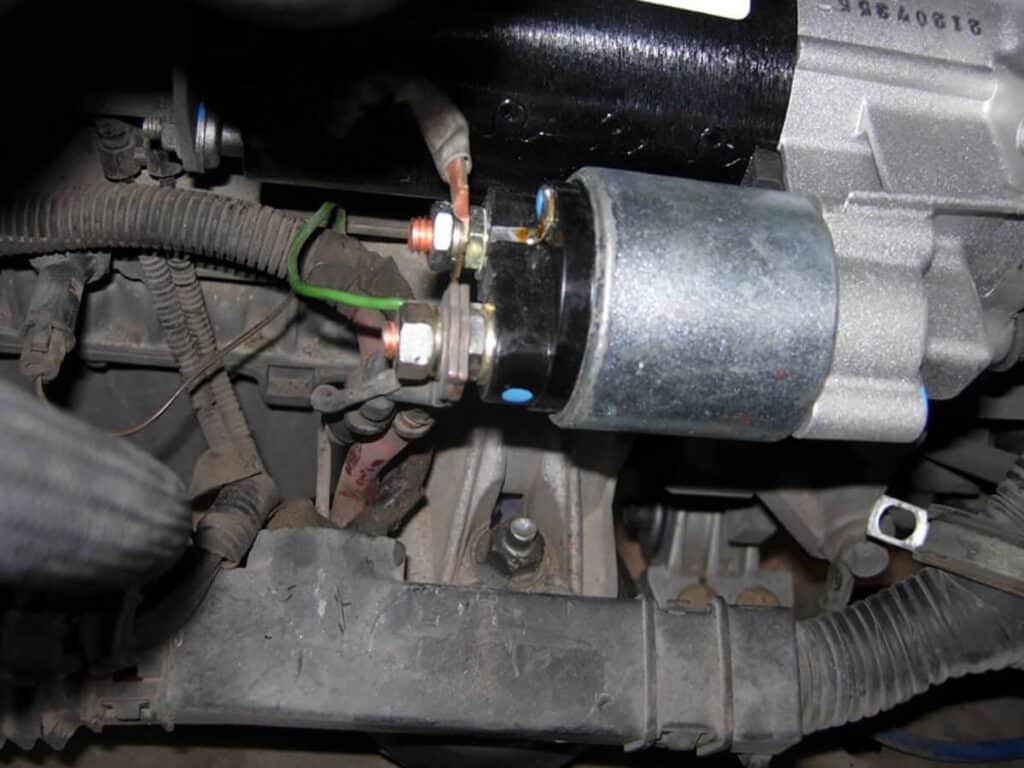Introduction
Ever had your car refuse to start on a freezing Canadian morning? Or, maybe, you’ve heard a clicking sound but your engine remained silent? That could be your starter solenoid calling out for help!
What is a Starter Solenoid?
The starter solenoid, or starter relay, is a key component in your car’s starting system. It’s essentially an electric switch that sends power from the battery to the starter motor when you turn the key or press the start button, setting your engine in motion.
How Much Will it Cost to Replace a Starter Solenoid in Canada?
In Canada, replacing a starter solenoid will typically cost between $100 and $200. This estimate includes both parts, which generally range from $30 to $100, and labour costs that can vary from $70 to $100. The labour time for this task is usually around 1 to 2 hours, depending on the vehicle model.
What are the Symptoms of a Faulty Starter Solenoid?
The symptoms of a faulty starter solenoid can vary but typically include:
• Vehicle Not Starting or Intermittent Starting: This is one of the most common signs. The solenoid is responsible for transferring electrical current from the battery to the starter motor when you turn the ignition. A malfunctioning solenoid may not be able to perform this task effectively, causing the vehicle to not start or only start intermittently.
• Clicking Noise When Trying to Start the Car: A distinctive clicking noise can often be heard when the starter solenoid is faulty. This is because the solenoid is trying to engage the starter motor but is failing to do so.
• Starter Motor Remains On After Starting the Car: In a normal situation, the starter motor should disengage as soon as the engine starts running. However, a faulty solenoid can cause the starter motor to remain on, which will cause a distinctive grinding noise.

• Battery Drains Quickly: If the solenoid is stuck in the ‘on’ position, it could continuously provide power to the starter motor, quickly draining the battery.
• Smoke or Smell of Burning: If the solenoid is short-circuiting or overheating, it could cause smoke or a burning smell. This should be addressed immediately as it could cause further damage to the vehicle.
Check Engine Light Comes On: In some modern vehicles, a faulty starter solenoid can trigger the Check Engine light on your dashboard.
How Long Does a Starter Solenoid Last?
A starter solenoid can last anywhere between 100,000 to 150,000 kilometers, depending on driving habits and vehicle maintenance. However, it is essential to note that they can fail earlier due to manufacturing defects or other car issues.
How Does a Starter Solenoid Become Defective?
A starter solenoid can become defective due to several reasons:
• Age and Wear: Over time, the constant cycle of engaging and disengaging can cause the internal components of the solenoid to wear out.
• Corrosion: Corrosion can occur due to exposure to moisture, especially in vehicles driven in harsh weather or road conditions. This can damage the internal components of the solenoid, preventing it from functioning properly.
• Faulty Wiring: If the wiring to the solenoid is damaged or frayed, it may not receive the power it needs to function. This can occur due to physical damage, heat exposure, or natural wear over time.
• Poor Quality Components: Lower quality components may not have the durability to withstand the demands placed on them, leading to premature failure.
• Electrical Overload: An electrical overload or short circuit can burn out the solenoid.
• Insufficient Maintenance: Insufficient maintenance can lead to oil or dirt build-up, which may interfere with the solenoid’s ability to engage and disengage correctly.
How Can a Faulty Starter Solenoid Affect Other Systems in the Car?
• Compromised Starting Mechanism: The primary role of the starter solenoid is to engage the starter motor in the ignition process. A faulty solenoid can prevent the vehicle from starting or cause intermittent starting issues, leading to potential inconvenience or safety concerns.
• Damage to Starter Motor: If the solenoid malfunctions and keeps the starter motor engaged beyond the starting phase, it can cause the motor to overheat and become damaged. This can also wear down the vehicle’s battery and result in premature failure.
• Potential for Overloading Electrical System: The starter solenoid serves as a type of electrical relay, limiting the current that flows to the starter motor. A malfunctioning solenoid could allow too much current to flow, potentially causing damage to the wiring, fuses, or other electrical components.
• Battery Drain: A solenoid that is stuck in the “on” position can continuously draw power from the battery, even when the engine is off. This can result in a drained battery and the inability to start the vehicle.
• Engine Damage: In extreme cases, a continuously engaged starter can lead to significant engine damage, such as a damaged flywheel.
Is it Safe to Drive with a Faulty Starter Solenoid?
Driving with a faulty starter solenoid can present significant risks, making it an unsafe practice. The starter solenoid is integral to the operation of your vehicle as it serves as the main switch for the starter system. If it’s defective, you may not be able to start your vehicle at all, potentially leaving you stranded in inconvenient or even dangerous locations. The issue isn’t just a matter of starting your car; if the starter solenoid sticks in the ‘on’ position, it can lead to a situation where the starter motor stays engaged. This can eventually lead to severe damage to the starter motor, flywheel, or even the engine, which can be costly to repair.
Moreover, if the starter solenoid is not working correctly, it could cause the starter motor to draw more current than it should. This excessive current draw can lead to overheating and damage to the battery, wiring, and other components in the electrical system. It’s therefore highly advised to get a faulty starter solenoid checked out and replaced if necessary by a professional mechanic as soon as you notice any symptoms. Ignoring the signs of a faulty starter solenoid may only lead to further complications and costs down the line.

How Can I Make My Starter Solenoid Last Longer?
• Regular vehicle maintenance and inspection can help identify issues early
• Keep the electrical system, including the battery, in good condition
• Avoid unnecessary short trips that require frequent engine starts
Can a Mobile Mechanic Replace a Starter Solenoid?
Yes, a mobile mechanic can indeed replace a starter solenoid. It’s a job that doesn’t require a fully equipped garage and can be done at your convenience, at home or your workplace.
Conclusion: Starter Solenoid Replacement
A faulty starter solenoid can leave you stranded, turning a routine day into a stressful ordeal. Regular vehicle inspections and maintenance can help ensure the longevity of your starter solenoid, ensuring that your car is ready to start whenever you are. So next time your car gives you signs of a failing starter solenoid, don’t ignore them. It’s your vehicle’s way of asking for help!
Next Steps
Book Your Serpentine Belt Tensioner Assembly Replacement Service
The service most frequently booked by those who read this article is Serpentine Belt Tensioner Assembly Replacement. Uchanics’ expert technicians make the process even more convenient by bringing the service right to your doorstep. We perform this job at your home or office, covering over 40 cities in Ontario, including Toronto, Mississauga, Brampton, Oshawa, Ajax, Scarborough, and more. Our commitment to excellence has earned us more than 700 glowing 5-star reviews. Choose Uchanics for your Serpentine Belt Tensioner Assembly Replacement and experience unparalleled convenience and top-quality service.
